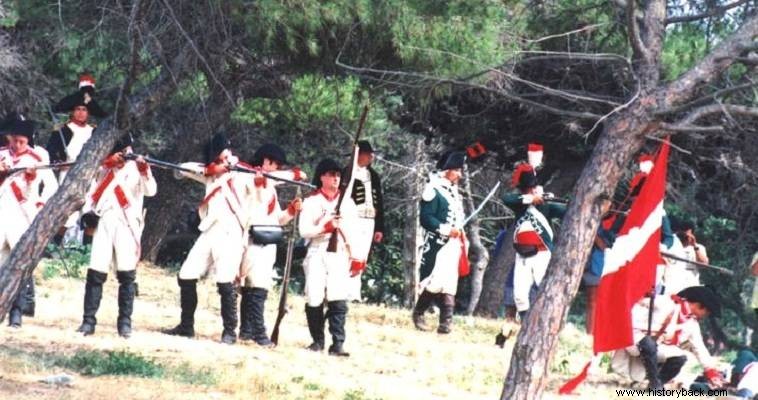
The historical Order of the Knights of St. John settled in Malta in 1530 after his expulsion from Rhodes. From there he fought the Ottomans and their allies for about two centuries. However, it succumbed to the military superiority of Napoleon's France in 1798.
In 1776 the Grand Master of the Order Francisco Jimenez de Texada decided to form the Malta Infantry Regiment. The regiment would include men from all over Europe as a foreign legion. Officials of the Order went to Avignon, Corsica and Marseille and they recruited.
However, most of the 1,200 men who enlisted were scum of the local societies, criminals, deserters from other armies, etc. And because a significant number of them deserted almost immediately after being enlisted, the recruitment was extended to other Mediterranean ports as well. The presence of Greeks in the ranks of the regiment is also suspected. Finally, to thicken the ranks of the unit, the Knights also recruited Maltese.
The constitution was organized on the French model. He marched only one battalion, however, with one company of grenadiers and four musketeers, with a total strength of over 500 men. The regiment was well trained, with high morale and had taken charge of guarding the forts of Tigne, St. Angelos, of Ag. Elmos (Erasmus) and Ricasoli. A detachment was also stationed in the capital Valletta.
When the French landed the regiment resisted. The garrison of the fort of Tigne particularly distinguished itself, repulsing every French attack against it. The Valletta detachment took part in the determined attack against the French besiegers, while the garrisons of the other forts also laid down their arms only when an armistice was finally signed.
After the conquest of Malta by the French, the captured soldiers of the regiment were forced to enlist in the French "Legion of Malta" and took part in Napoleon's campaign in Egypt.
The men wore uniforms typical of the time, white in color, with red lapels and cuffs in the colors of the flag of the Order of St. Ioannis. They carried a black double-breasted hat, a black cartridge case, white leather accessories, a musket, a bayonet. The men wore black overalls with tall black gaiters. Officers wore a cloth waist belt. They also wore boots and a plume on their double-breasted hat.
In 1777 the new grand master of the Order, Emmanuel de Rohan Polduc, wanting to strengthen the defense of the island, decided to form a Regiment of "Hunters" (light infantry). The existence of a specialized light infantry unit in such a small army as that of the Ioannites is surprising, however it was fully justified since the unit included the best hunters of the island.
Many of the men who joined the new regiment were already serving the Order in another capacity. The unit became known as the falconry regiment because as hunters, previously, its men also used hunting falcons. The regiment originally fielded a single battalion of five, at first and then four, companies, with a strength of 522 men. In 1798, however, he extended two battalions with a total strength of 1,200 men.
It is noteworthy that only its commander was not Maltese, unlike the men, but also his non-commissioned officers and officers. During the French invasion the regiment also performed guard duty at various forts and laid down its arms only after the armistice was signed. Some officers who showed pro-French feelings were killed by their own men.
The men wore green tunics with white epaulettes, a Corsican hat with a plume, a musket and a bayonet. The leather attachments were white while the cartridge case was black. Men also wore low boots. The officers carried a sword and a cloth belt, insignia of their rank.
In addition to the regular units, which also included navy men, the Knights' infantry complemented the two militia regiments which, however, were not regular units and in peacetime there were only their cores, organized into companies.
